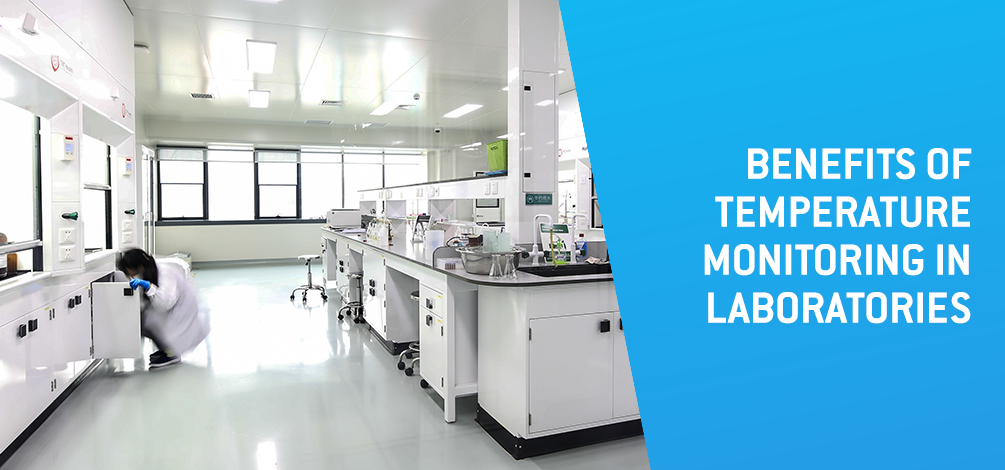Benefits of Humidity Monitoring in Laboratories

Environmental conditions play a crucial role in maintaining the quality of laboratory results.
Accuracy and reliability are the cornerstones of any scientific research.
In laboratories, where each measurement can determine the success of a project or a major investment, environmental conditions play a crucial role in maintaining the quality of results.
Among the environmental parameters that require strict control, humidity stands out as one of the most critical, and its monitoring is essential.
Humidity in Laboratory Environments
The appropriate level of relative humidity in laboratories is not just a matter of comfort for researchers. It is a decisive factor in the integrity of scientific processes.
Monitoring humidity in laboratories is essential to prevent and control contamination and microbial growth. For instance, it plays a significant role in the development of bacteria, yeasts, and moulds, all of which are sources of contamination.
Uncontrolled fluctuations in humidity within a laboratory environment can introduce unwanted variables into experiments and even invalidate results, making continuous monitoring critical for maintaining data quality.
Therefore, all laboratories must recognize that humidity is vital to maintaining safety and efficiency on an ongoing basis.
Impact on the Quality of Results
Biological, chemical, and other samples used in research or analysis can be sensitive to environmental conditions.
If humidity levels are not adequate, they can alter the structure or composition of the samples, directly impacting test or analysis results.
Deviations in this environmental variable can lead to instability in sensitive chemical compounds, affect the integrity of biological samples and cell cultures, and reduce the effectiveness of laboratory reagents.
Even the precision and stability of laboratory instruments can be affected, compromising the reliability of the results obtained.
Due to the significant impact that relative humidity levels can have on such a critical sector that handles sensitive assets, many public and governmental institutions set minimum and maximum values for this parameter.
Although there are clear differences between countries and continents, most standards define that relative humidity in these environments should not fall below 30% or exceed 70%.
It is also important to highlight that monitoring environmental variables is extremely relevant across different types of laboratories. Here are some example applications:
-
Research laboratories
-
Clinical analysis laboratories
-
Pharmaceutical laboratories
Critical Factors in a Humidity Monitoring System
We’ve established that monitoring humidity in laboratory environments is essential. We must also consider that manually performing this monitoring on a regular basis is an outdated and fallible strategy that leads to more measurement errors.
Automatic Variable Logging
The solution that prevents delays in problem identification and saves time for laboratory technicians is to opt for systems with continuous automatic data logging, such as the DUOS inHygrotemp.
This Tekon Electronics system ensures:
-
Continuous data logging without interruptions
-
Monitoring accuracy, mitigating human error
-
Historical measurements on an IoT platform
-
Constant compliance with regulatory standards
Remote Data Access
One of the main advantages of Tekon Electronics’ monitoring systems is the ability to access data remotely.
This allows managers to monitor laboratory conditions from any location, ensuring constant oversight even outside working hours.
Instant Notification Alerts
By integrating DUOS solutions into a complete system with data visualization, such as the Universal IoT Gateway, those responsible for environmental conditions in laboratories benefit from instant alerts via email and SMS.
Thus, when minimum and maximum parameter limits are exceeded, it becomes easy to prevent irreversible damage to samples and financial losses, while ensuring the safety of technicians and researchers.
Operational and Financial Advantages
The improvements achieved by monitoring relative humidity levels in laboratories also have a strong operational and financial impact.
Confidence in the achieved results is the standout benefit, as it demonstrates a high level of efficiency and productivity in the laboratory environment.
In addition, it boosts the laboratory’s reputation by translating into greater client satisfaction.
Ensuring ideal working, maintenance, preservation, and research conditions is also a key strategy to reduce the negative impact of constant audits, technical inspections, and safety checks.
Regarding the financial impact of proper humidity monitoring, laboratories benefit directly in various ways, such as:
-
Less waste of samples and reagents
-
Less need for recalibration of technical instruments
-
Higher savings by avoiding costs from compensation, material waste, and operational failures
Tekon Electronics Has the Right Solution
At Tekon Electronics, we understand that monitoring environmental variables inside a laboratory is a necessity that extends to quality, safety, and process reliability standards.
Our brand portfolio offers the right solutions to actively monitor factors like relative humidity, detect deviations in time, and enable the fast implementation of control and prevention measures.
We guarantee a quick and practical implementation process for the client through the following steps:
1. Analysis and assessment of your business needs
2. Planning and mapping the most suitable monitoring system
3. Installation of sensors and other necessary equipment
4. Configuration and definition of parameters and alerts
5. Specialized after-sales support provided by our team
The technologies we provide to our clients are perfectly integrated into a strategy aimed at improving result accuracy, reducing operational costs, and increasing productivity.
We have a team specialized in wireless variable monitoring ready to boost your lab’s efficiency!
Contact us through this LINK.